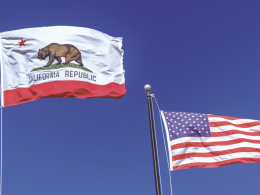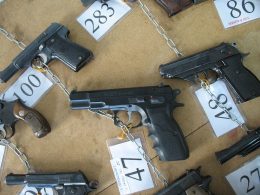A rifle barrel has interior spiral grooves referred to as rifling, which is used to spin a bullet to keep it stable without wobbling on it’s way to the target. The tighter these spiral grooves, the faster the bullet will spin.
The barrel twist rate refers to the rate at which a bullet spins in the rifle barrel. It’s calculated in inches per turn so if you have a barrel with a 1:10†twist, it means that upon firing, the bullet will spin one revolution in 10 inches and a twist rate of 1:8 spins the bullet one revolution in 8 inches. The lower the twist number, the faster the bullet spins and has a high twist rate.
A fast twist increases the pressure, barrel wear and strain on the bullet jacket, which can unravel if it’s spun too fast. The bullet length actually determines what barrel rifling twist to use. Generally, if a bullet is longer it’s heavier. However, modern bullets are lead-free, or made of copper and zinc which are lightweight.
So, a 1:8†twist barrel will spin the bullet a lot faster than a 1:10†twist barrel and generally, a fast twist barrel is used for longer bullets and slower twist barrels are for shorter bullets. Longer and heavier bullets need a faster twist because they are wobblier while shorter and lighter bullets don’t need that much spin to stabilize. Good stability is important because it determines accuracy.
When a bullet’s twist is recommended at 1:10â€, the bullet is more stable when fired from any rifle with a 1:10†or faster. This means a 1:9†would work well but a 1:11†probably wouldn’t. Recommended twist rates ensure adequate stability in all conditions, but there are some cases when the bullet may be stable from a slower twist (high altitude for example).
Slower twists could have lower pressure and better accuracy with lighter bullets. But probably not the best choice for accuracy when shooting heavy bullets at extreme ranges like 600-1000 yards.
Let’s look at the twist rate and bullet weight for the .308.
Most gunsmiths use the Greenhill Formula to determine the ideal twist for a given bullet.
The formula is T=150(d/r) for velocities from about 1500 to 2800 fps. Substitute 180 for the 150 value for velocities exceeding 2800 fps.
“T†is the twist rate.
“d†is the bullet diameter.
“r†is the bullet length to diameter ratio (length of the bullet divided by diameter).
There are two twist rates commonly used for the .308 Winchester, the 1:10 and 1:12 which serve well in hunting rifles.
The Sierra 168 grain Matchking is 0.308 inches in diameter and the bullet length is approximately 1.210 inches. This gives a length to diameter ratio of 3.929. Insert this value into the formula and use the 150 as the constant (best velocity for the 168 grain MK is 2550 – 2600 fps). Therefore:
T=150 x (.308/3.929); T=150 x 0.078; T=11.76 inches or 11 ¾-inch twist. So, this gives us one bullet rotation for every 11.76 inches of barrel traveled. This is why the PSS and Chandler shoot the 168s so well.
Now, let’s look at the 175 Matchkings that don’t do so well in the 12 twist barrels. Using the formula, take the 0.308-inch diameter and 1.257-inch bullet length to get the ratio of 4.081. Optimal velocity is 2500 to 2550 fps so use the 150 constant again:
T = 150 x (.308/4.081); T = 150 x 0.0755; T = 11.320. The half inch twist can make a big difference because although 12 twist barrels tolerate 175s, they don’t do exceptionally well with them.
If choosing a slower rifle twist, for example, 1:14 or 1:12, then the bullets shouldn’t have a weight over 65 grains. It’s not going to damage the rifle if you use otherwise, you will just get poor accuracy results. It takes less twist to stabilize a bullet at a higher velocity than a lower one. With the same velocity in the same caliber, longer bullets require faster twist rates than shorter bullets.
It’s possible to over-stabilize a bullet that can negatively impact accuracy although it’s more noticeable in extreme over-stabilization while shooting at a very long range. While the bullet is airborne, it travels along the downward arc with the tip pointing skyward. This worsens the wind drift and accelerates the velocity loss. The bullet’s tip, when correctly stabilized, will tip downward as the bullet begins the downward arc.
If you’re just starting out in shooting or want to develop your long-range shooting, keep a few basic facts in mind. Shooting a 1:7 rifle twist with quality bullets, you can go as light as you want with commercial ammunition.
When going for accuracy at ranges between 300-700 yards, a 69-85 grain bullet is ideal. However, if cost is a factor and you’re shooting at a maximum of 300 years, consider the bulk 55 grain M193. Every gun enthusiast can easily get carried away in trying to find the best twist rate using a quality barrel. A longer barrel does improve accuracy but theoretically, the accuracy is also driven by rifling, barrel length, and bullet weight. So, the longer the barrel the more the bullet’s exit velocity increases however more friction limits the barrel length.
It’s easy to get swept up in trying to calculate the best twist rate. It’s mostly a theoretical task right down to the last detail.
There’s a lot that goes into configuring a rifle for your shooting purpose and it’s more than simply finding the right twist rate. A longer bullet requires you to consider tight neck chambers or special throating and seating depth adjustments. The barrel twist rate is a major factor in selecting your ammunition for the distance you are shooting.








